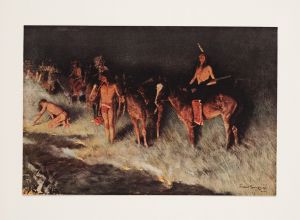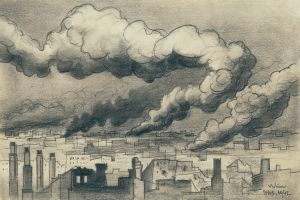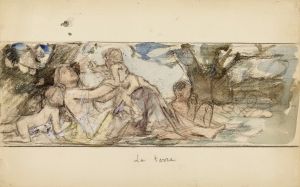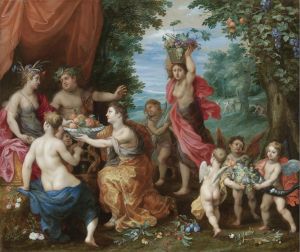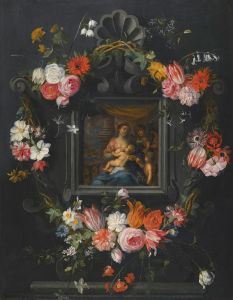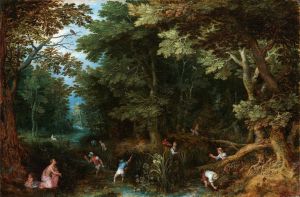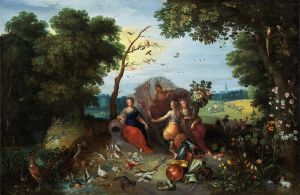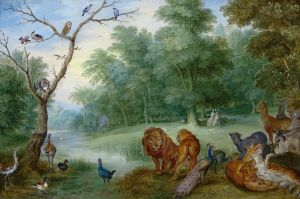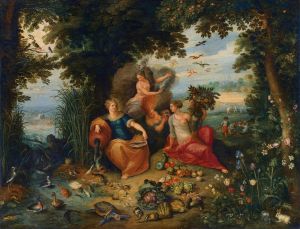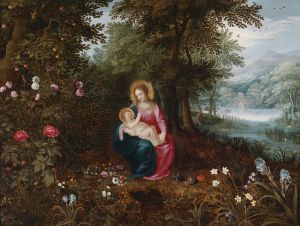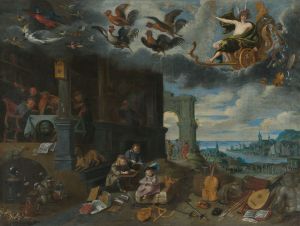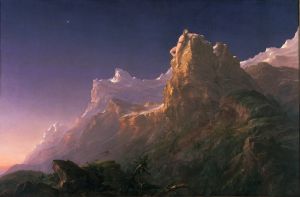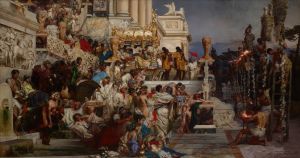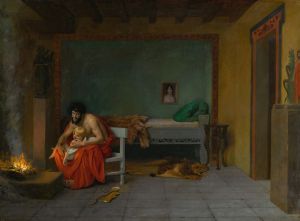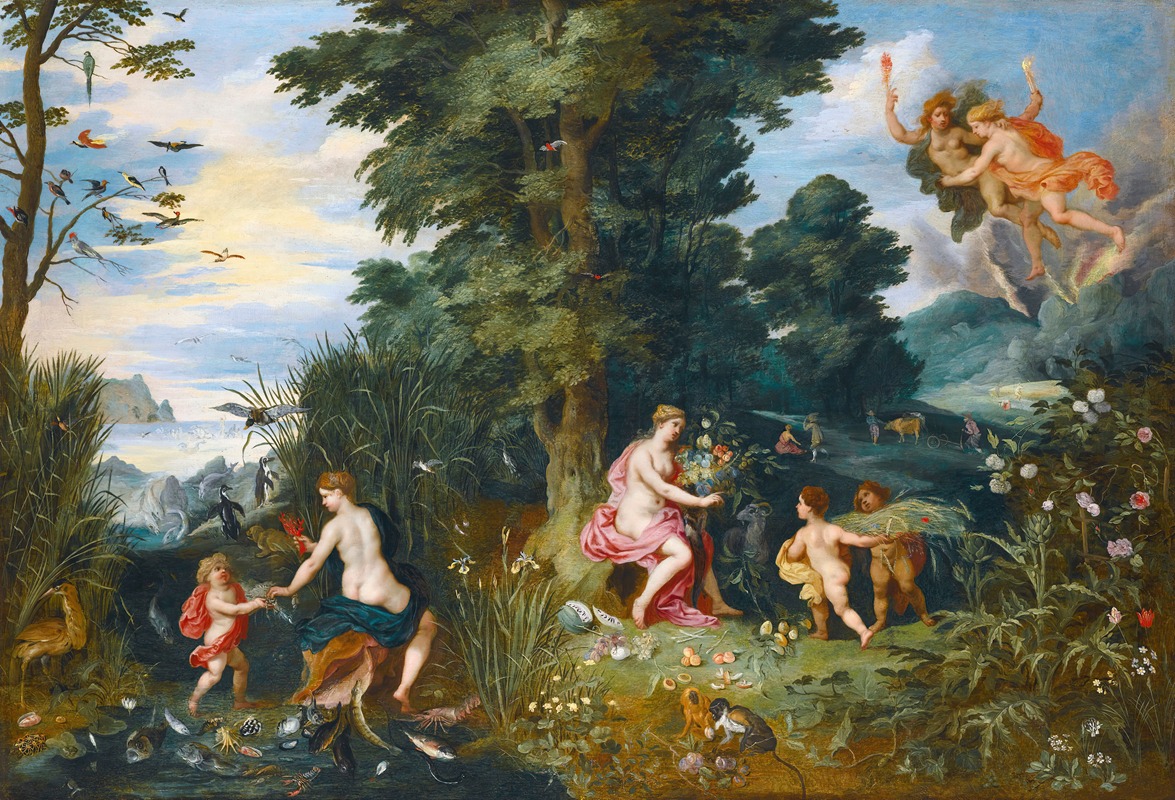
Allegory Of The Four Elements
A hand-painted replica of Jan Brueghel the Younger’s masterpiece Allegory Of The Four Elements, meticulously crafted by professional artists to capture the true essence of the original. Each piece is created with museum-quality canvas and rare mineral pigments, carefully painted by experienced artists with delicate brushstrokes and rich, layered colors to perfectly recreate the texture of the original artwork. Unlike machine-printed reproductions, this hand-painted version brings the painting to life, infused with the artist’s emotions and skill in every stroke. Whether for personal collection or home decoration, it instantly elevates the artistic atmosphere of any space.
Jan Brueghel the Younger, a prominent Flemish Baroque painter, is known for his detailed and vibrant works that often explore allegorical themes. One of his notable paintings is "Allegory of the Four Elements." This artwork is part of a broader tradition in European art where artists personified the classical elements—earth, water, air, and fire—through allegorical representation.
Jan Brueghel the Younger was born in 1601 in Antwerp, into a family of artists. He was the son of Jan Brueghel the Elder and the grandson of Pieter Bruegel the Elder, both of whom were influential painters. Jan Brueghel the Younger continued the family tradition, often collaborating with other artists and producing works that reflected the rich artistic heritage of his lineage.
"Allegory of the Four Elements" is a testament to Brueghel's skill in combining intricate detail with allegorical content. The painting is characterized by its vivid depiction of the natural world, a hallmark of Brueghel's style. Each element is represented through a series of symbols and figures that convey the essence of earth, water, air, and fire.
In the painting, Earth is often depicted with lush landscapes, abundant flora, and fauna, symbolizing fertility and the richness of the natural world. Water is represented by rivers, seas, or fountains, often accompanied by aquatic creatures and vessels, highlighting its life-giving and transformative properties. Air is typically illustrated with birds and open skies, emphasizing freedom and the ethereal nature of this element. Fire is usually symbolized by flames, volcanic imagery, or celestial bodies like the sun, representing both destruction and creation.
Brueghel's work is notable for its meticulous attention to detail and the harmonious composition of various elements within a single canvas. His ability to integrate these elements into a cohesive narrative reflects his mastery of allegorical painting and his deep understanding of the symbolic language of his time.
The painting also reflects the broader cultural and scientific interests of the 17th century, a period marked by exploration and a growing curiosity about the natural world. Artists like Brueghel were influenced by the scientific discoveries of their time, and their works often mirrored the contemporary fascination with categorizing and understanding the elements of nature.
Jan Brueghel the Younger's "Allegory of the Four Elements" is a significant example of Baroque art, showcasing the era's characteristic blend of realism, symbolism, and intricate detail. The painting not only serves as a visual representation of the classical elements but also as a reflection of the intellectual and artistic currents of the 17th century.
Today, Brueghel's works, including "Allegory of the Four Elements," are appreciated for their artistic merit and their contribution to the rich tapestry of European art history. His paintings continue to be studied and admired for their complexity, beauty, and the unique insight they provide into the allegorical traditions of the Baroque period.





